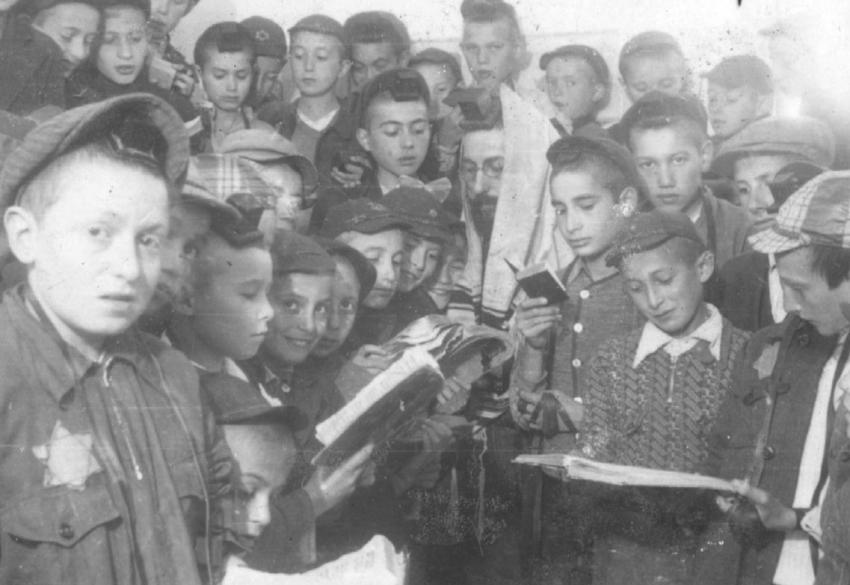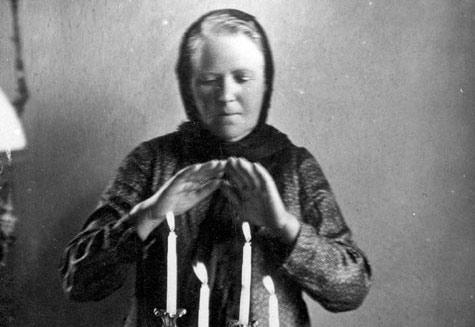We are aware that when retelling the story of the Holocaust and passing it on from one generation to the next, the challenge posed to us as educators is to inculcate a memory that is made up of a collective constitutive historic experience that the Jewish people endured as a nation as well as a terrible tragedy involving the loss of six million individual souls.
Rachel Auerbach a Holocaust survivor from the Warsaw ghetto wrote about the need and duty of the public to perpetuate the memory of the individual victims:
May God remember the souls of my father and teacher and my mother and teacher, may God remember the souls of all my loved ones who died a terrible and unnatural death before their time… In my mind’s eye, I see myself as a young girl standing on a bench behind my mother [...] as the beadle bangs [...] three times with his prayer book on the table and calls out, so that all the orphans of Israel can hear him as they stand before the house of prayer waiting for this moment.
The Yizkor prayer!
Behold, the moment of solemn mourning has come, which is repeated four times a year on the great festivals of Israel, the moment of remembering the souls. And even those who no longer pray come on these days to the house of prayer and crowd together [...] next to the entrance, gathering in the courtyards and streets near the synagogues in the cities, awaiting this signal.
The Yizkor prayer.
And every one of the surviving Jews who has come in wake of that call will bend his head and close his eyes when he hears it to focus on his own grief and commemorate the souls of the members of his family, just as I commemorate mine – the names of those who are lost to me [...] But at the end of the Yizkor prayer [...] is a prayer for those who were murdered in terrible, unspeakable ways because they were Jews, but for whom there is no one left who remembers their names.
And they are the majority.
The Yizkor prayer.Rachel Auerbach, In the Streets of Warsaw 1939–1943, Am Oved, Tel Aviv 1954, pp. 83-84.
However, alongside the practice in Jewish tradition of reciting the Yizkor commemorative prayer, many commemorated and still commemorate the dead by means of studying texts of the Mishna, one of the most basic and central texts in the world of Jewish law.
The study of mishnayot – verses of the Mishna, which still took a central place in Jewish life on the eve of the war, continued to be part of it during the Holocaust, and immediately after it. Already in the Displaced Persons (DP) camps right after the war, we can see there were calls to study Mishyaot to commemorate those who perished and for the transcendence of their souls.
Yad Vashem established the Hall of Names in an effort to address the need and challenge to commemorate all those who perished. Using numerous means and methods, Yad Vashem continues to collect the names of the victims of the Holocaust on Pages of Testimony and in other ways in order to create a database that contains the names of as many Holocaust victims as possible.
In this unit, we have decided to explore three subjects that arise from the study of three tractates of the Mishna: Masechet Brachot, Masechet Shabbat and Masechet Rosh Hashanna. In the context of this unit, the students will encounter sources containing testimonies about the Holocaust period that will enable an in-depth study of the relevant subjects both “in those days,” and “in our time.” This study will add yet another level to the understanding of the Jewish efforts to stand strong and resist during the Holocaust, lending a deeper meaning to the concept of a “Torah of life.”
After a person dies, his family and friends do not only grieve for his death and speak about how he died; they also speak about his life, his character and the heritage he left behind. Although we cannot pay tribute to the life of each and every one of the people who lived through the horrors of the Holocaust and ultimately perished, perhaps the testimonies presented here can serve to commemorate their lives and struggle to preserve their human dignity during the Holocaust.
The mishnayot will be studied in the context of lessons or in groups. The unit presented here will be taught to sum up the study of the mishnayot. This study of the mishnayot can be held in the context of a community of parents and children or as part of joint inter-class study.








